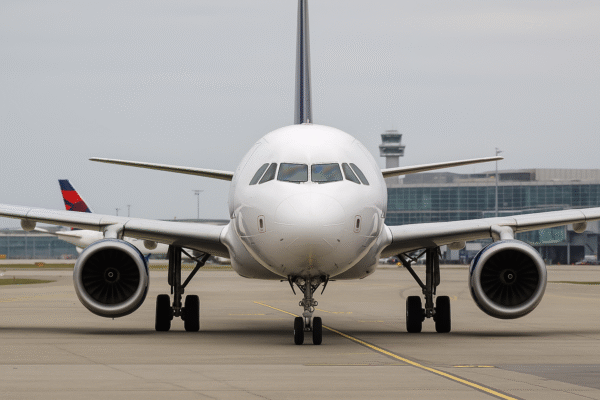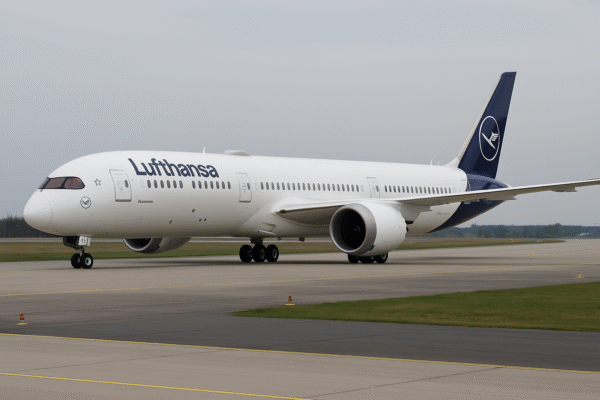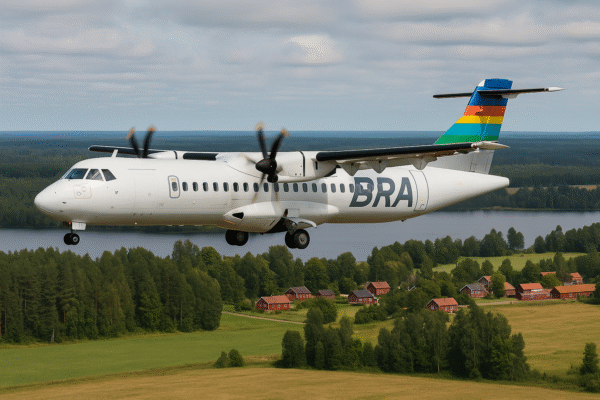Sweden is poised to redefine regional travel with an eye on both accessibility and sustainability. To bolster its standing as a top-tier regional tourism hub, Braathens Regional Airlines (BRA) is set to modernize its operations by introducing seven ATR 72-600 turboprop aircraft. In tandem, BRA will deepen its collaboration with SAS to weave together a seamless network linking major cities and emerging destinations like Kalmar, Halmstad, and Sälen.
Expanding Access Through Smart Connectivity
Launching in late June 2025, this initiative marks the beginning of a transformative era in regional flights Sweden can offer. BRA, through its strategic alliance with SAS, will roll out direct services from Stockholm Arlanda to both Kalmar and Halmstad. These routes are more than just new flight segments—they are lifelines to destinations rich in maritime heritage, medieval architecture, and coastal charm that until now have remained on the fringes of convenient tourism.
Moreover, a seasonal, winter-only connection from Arlanda to Sälen will open the gateway to Sweden’s premier alpine terrain. As headquartering the capital’s cultural vibrancy with the thrill of winter sports, this route perfectly blends a metropolitan start with a snowy adventure. It caters not just to holidaymakers but also perspective business travelers attending conferences or events in Halmstad or other less central regions.
Thanks to SAS’s robust international and European feeder network, global visitors can now touch down in Stockholm and effortlessly connect to these enhanced domestic services. It’s a strategy designed to enrich Sweden’s tourism narrative with greater depth and reach.
Eco-Conscious Skies with ATR 72-600
The selection of the ATR 72-600 fleet underscores BRA’s commitment to sustainable travel. Known for its exceptional fuel efficiency on short- and medium-haul trips, the turboprop aircraft cuts greenhouse gas emissions while also lowering operating costs. This eco-forward shift reinforces Sweden’s reputation as a leader in responsible travel, delivering a sustainable travel Sweden experience that appeals to climate-conscious tourists without sacrificing comfort or reliability.
By offering a greener aviation option, these regional flights attract travelers whose purchasing choices are increasingly shaped by environmental values. In essence, sustainability is no longer a back-seat consideration—it’s a deciding factor in trip planning for many international visitors.
Uplifting Local Economies and Diversifying Tourism
Better connectivity to Kalmar, Halmstad, and Sälen is expected to spark notable economic ripple effects. Increased visitor traffic will benefit local businesses—from cozy cafés and boutique shops to family-run guesthouses—that lie beyond the usual tourist hotspots. Both tourist dwell times and spending are predicted to climb, fueling reinvestment in community infrastructure and experiences.
This growth aligns with broader objectives set by national and regional tourism bodies, such as Visit Sweden, which champion decentralized tourism development. By fortifying transport routes and bolstering visitor-serving facilities, Sweden can showcase a more diversified tourism offering—one that goes well beyond Stockholm and Gothenburg, and into the heart of rural charm and seasonal excitement.
A Winter Season Reimagined with Direct Access to Sälen
For winter sports aficionados, the forthcoming season promises unprecedented convenience. The direct Arlanda–Sälen link eliminates cumbersome transfers and streamlines entry into Dalarna’s ski resorts. Beyond skiing, Sälen also offers snow-shoe treks, Nordic mountain biking, and spa retreats, allowing visitors to balance adrenaline-pumping adventures with wellness and tranquility. With easier access, Sweden’s winter tourism offering becomes that much more compelling.
Looking Ahead: A Denser Regional Flight Network
BRA’s rolling deployment of ATR 72-600 aircraft and its growing synergies with SAS points to even richer regional flight offerings in the near future. These turboprops, tailor-made for smaller airfields and shorter runways, are perfect for Sweden’s diverse and often remote regional destinations. Travelers can expect smarter, cost-effective travel options that bring Sweden’s coastlines, forests, heritage sites, and snow-clad retreats into clearer reach.
Conclusion
Sweden’s tourism framework is undergoing a thoughtful transformation. By integrating environmentally efficient ATR 72-600 aircraft and enhancing partnerships with SAS, the country is crafting a travel landscape where visitors—whether travelers, business delegates, or students—can effortlessly traverse between urban hubs, cultural treasures, and rural retreats. With both sustainability and accessibility at the fore, Sweden is setting the stage for seamless, meaningful, and eco-conscious journeys across its varied landscape.
For more travel news like this, keep reading Global Travel Wire















